[Editor's note: A version of this story appears in the February 2020 edition of Oil and Gas Investor. Subscribe to the magazine here.]
Some deals are still getting done in the Midland Basin. Longtime E&P executive Jack Hightower picked private-equity-backed Grenadier Energy Partners II LLC as the platform purchase for his SPAC, Pure Acquisition Corp., which will trade as HighPeak Energy Inc. upon closing.
In the $615 million (75% cash) deal for 23,000 net acres Fort Worth, Texas-based HighPeak will launch with 73,000 net and 12,000 barrels of oil equivalent per day (boe/d) of production, 80% oil, in Howard County, northeast of Midland, Texas. The Woodlands, Texas-based Grenadier ranks on R.W. Baird & Co. Inc.’s monthly summary of top operators by U.S. play on several measures. First three-month gross production—58,583 boe, 92% oil—per operated well is $2.8 million of revenues, averaging $269 per lateral foot.
Of all the upstream SPACs, or special purpose acquisition companies, launched in the past few years, the Pure deal is the first to focus on the Midland Basin. Mark Papa’s SPAC picked the Delaware; Jim Hackett’s bought in Oklahoma’s Stack play; Steve Chazen chose the Eagle Ford and Austin Chalk.
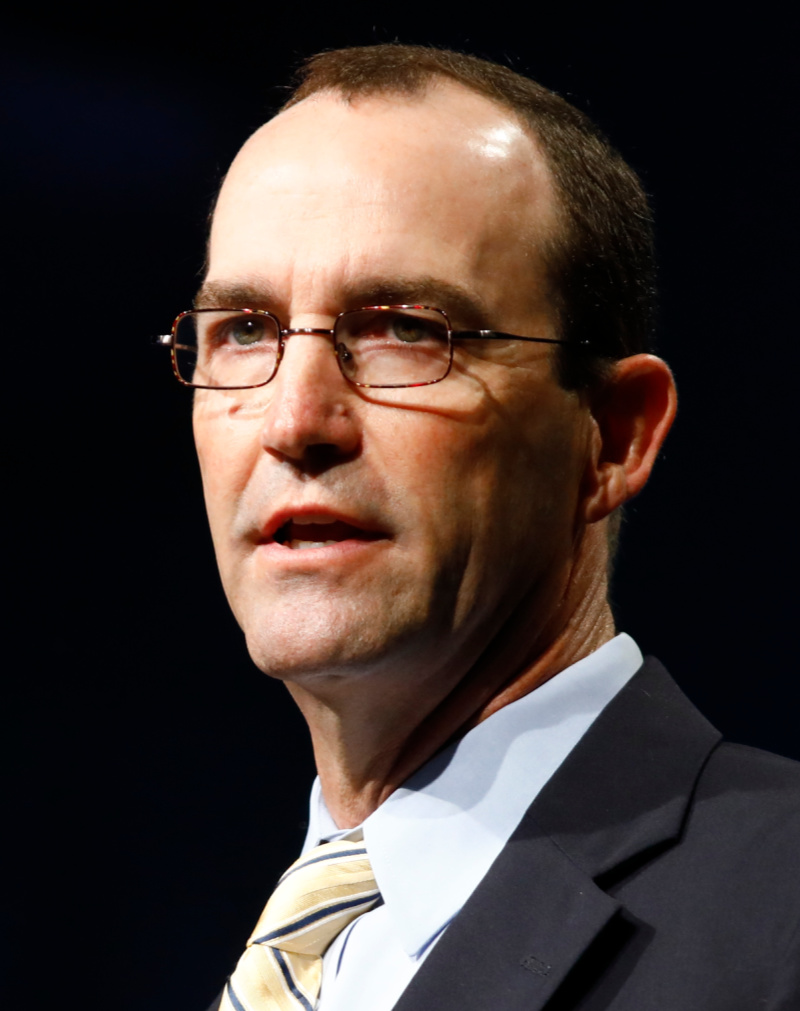
that’s virtually
all HBP, “you’re
driven by
technical reasons
for drilling one
prospect vs.
another,” said
David Bledsoe,
president of Henry
Resources LLC.
“You’re not driven
by leasehold
reasons. That’s a
good position to
be in.”
Plans for the Grenadier portfolio are four rigs making 2-mile laterals in drilling spacing units (DSUs) containing 875 gross, 725 net, landing locations in Wolfcamp A and lower Spraberry. The package comes with 97 gross operated and nonop wells, two-thirds Wolfcamp A and a quarter lower Spraberry.
Arun Jarayam and Michael Glick, analysts with J.P. Morgan Securities LLC, reported in December that the Midland Basin’s average six-month cumulative production among the top 18 operators grew 3% year-over-year to 12.7 boe per lateral foot, 79% oil.
Parsley Energy Inc. rocketed to No. 1 on the list from No. 13 a year earlier. “Parsley Energy’s 2019 wells were by far the most productive in the [Midland] with production of 22.3 boe per foot, 81% oil, which was 75% above peers and a 73% improvement from its 2018 wells,” Jarayam and Glick wrote.
In Glasscock County immediately east of Midland, Laredo Petroleum Inc. added 4,475 net acres, producing 1,400 boe/d, 55% oil, for $65 million. It estimates 45 gross, 35 net, locations in lower Spraberry and upper and lower Wolfcamp.
John Daniel, senior research analyst for Piper Jaffray & Co., reported from an October field trip that several operators aren’t seeing much more productivity gains from new wells “with no major step changes ahead, unless there is some unforeseen technological breakthrough.”
The Delaware Basin may make modest gains, he wrote, but the Midland “feels more mature.” Regarding M&A, activity may rebound, he added, as “some management teams noted they could receive the license to hunt for more inventory in 2020.”

For miles and miles
This past spring, Surge Energy US Holdings Co. put a 3.4-mile lateral in Wolfcamp A in Borden County north of Howard County. No one had made a 3.4-mile lateral well in the Permian Basin before. Secondly, Borden isn’t supposed to be economic for horizontal Wolfcamp; it’s on the Shelf edge.
“Most people would have said, ‘You get north of Howard County, it doesn’t work,’” said James Welch, Surge CFO. “Well, we’ve got some pretty good wells in Borden that I think disproved that. It’s an example of our innovative culture.”
Houston-based Surge is a subsidiary of Shanghai-traded Shandong Xinchao Energy Co. Ltd., operating in the northern Midland Basin as Moss Creek Resources Holdings Inc. in Howard and adjacent Borden. The former, as per Marshall Adkins, managing director and head of energy investment banking for Raymond James, is “the highest oil-cut county in the Midland Basin.”
Surge’s Medusa Unit C 28-09 3AH consisted of a total of 24,592 feet of hole with a vertical depth of 7,102 feet for total lateral displacement of 17,935 feet, drilled in 18 days by Latshaw Drilling & Exploration Co.’s conventional mud motor Rig #10, staying 100% in zone with ProDirectional services.
Surge didn’t provide IP and production-to-date details in December. But the results were compelling enough to continue the extra-extended-lateral program. “We currently have five wells that are 3 miles or longer,” said Phil Webb, COO.
“We’re seeing strong results from our 2.5- miles-and-longer program in Borden. We’re going to continue that longer-lateral program.”
All five of the 3-mile-plus wells are in Borden in Wolfcamp A. The Medusa DSU has two wells, both more than 3 miles.
It chose Borden for the tests because the leasehold there—Surge bought its Midland leasehold in 2015 shortly after its founding— was largely undrilled, Webb said; its Howard leasehold already had many wells, thus DSUs had been laid out for mostly 1.5-mile wells.
“As we started laying out the [Borden] units, we built our learnings from Howard and created a longer-lateral program. We felt we could take what would be 5 miles of subsurface potential and, instead of drilling three 1.5-mile wells, we could drill two 2.5- mile wells. It’s combining well sticks two for three,” Webb said.
“We would capture capital efficiencies, and it made sense from a reservoir-development and economic standpoint, combined with our land position.”
Staying in zone for more than 3 miles is one challenge. Pushing sand farther than a 5K run with sufficient pressure to reach the toe without duning is exponentially harder. The Medusa completion involved 52 stages with TTS SlicFrac diversion for 2,200 pounds of proppant per lateral foot. The pumper was Universal Pressure Pumping; wireline, GR Energy Services.
Then there are the plugs for stage spacing. Dissolvable plugs are common. These don’t have to be removed; they basically melt over time.
But, Webb said, the extended laterals are being completed mostly with physical plugs, using dissolvable plugs closer to the toe. “So far, we have been able to drill out all the way to TD [total depth] with 100% mechanical success.”
When it fits
Houston-based Sequitur Energy Resources LLC plans 3-milers this year. Its longest to date is 2.5 miles, said Scott Josey, chairman and CEO. Its shortest are 1.5 miles; the average across its leasehold is about 8,700 feet.
Midland-based Endeavor Energy Resources LP, with more than 370,000 net acres in the Midland Basin, is working on further blocking up its position to allow for yet-longer laterals. Its average lateral length in 2019 was 2 miles.
“We’ve put more than 20 2.5-mile-lateral wells into sales this year,” said Lance Robertson, COO and senior vice president of development. “At the end of the day, we look at productivity per horizontal foot compared with the cost of development per foot.”
So far, they’ve worked out. “We wouldn’t hesitate to do that again,” he said.
But beyond 2.5 miles, Endeavor isn’t as confident in the value, he added. “We would drill some of those where there might be a surface issue, such as in or near a community. I think [the 3-miler] will be there on an as-needed basis.”
Meanwhile, Midland-based Henry Resources LLC doesn’t have plans for 3-milers either. Science-ing it isn’t necessary in this case; its leasehold isn’t configured for it.
“We just don’t have those opportunities today. If we did, we would certainly look into it,” said David Bledsoe, Henry president.
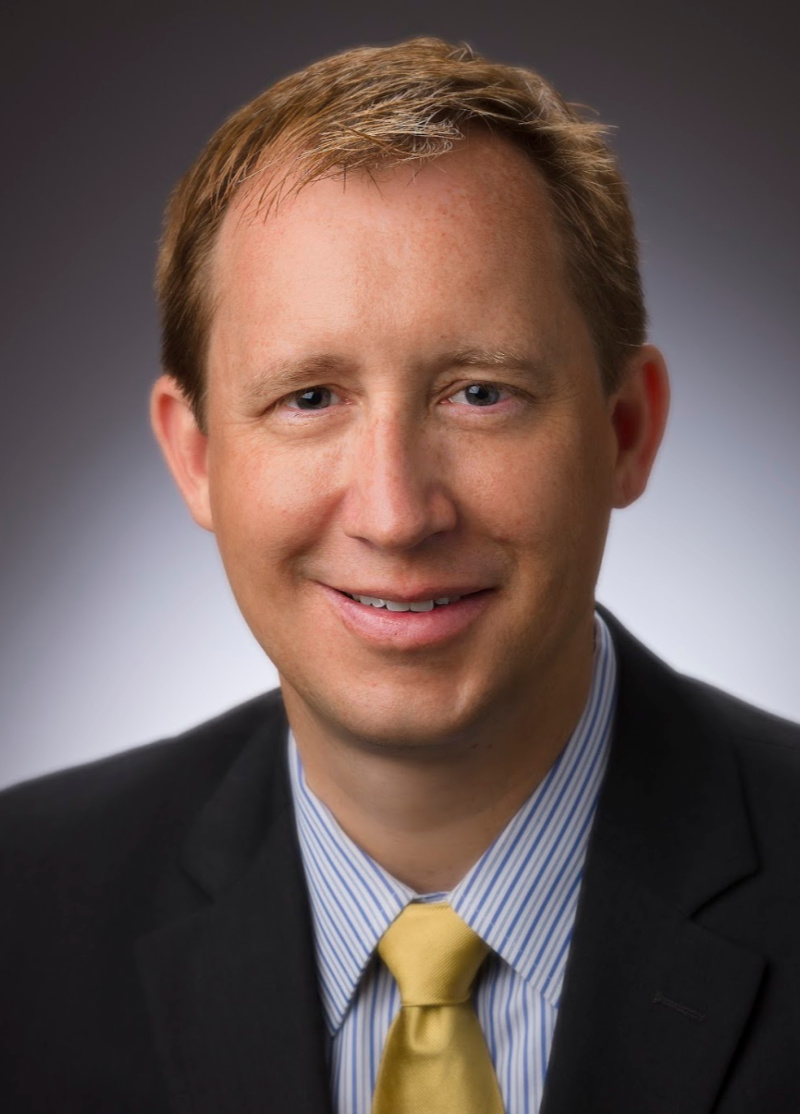
Resources LP
has encountered
a few primaryinfill well issues;
otherwise, it’s
mostly only
drilled parent
wells, according
to Lance
Robertson, COO.
Henry has locations for 2.5-mile laterals, and a handful of them are on the schedule. “We don’t have any heartburn about the 2.5- mile laterals,” he added, so 3 miles are probably achievable.
“There are issues that come up the longer you drill, certainly. And it’s not so much the drilling; it’s fracking and clean-out operations and keeping the length of lateral clean and producing,” Bledsoe said.
“But technology is always pushing us up the learning curve.”
Dedicated rig
Henry Resources had one rig drilling for it in early December and has averaged 1.5 the past few years. “We run one or two. That’s where we’ve been,” Bledsoe said.
A Permian operator since founded by Jim Henry in 1969, its 20,000 operated acres are about 80% HBP currently; net wells needed to hold the balance are fewer than five. To not have to race around miles of the Midland Basin, trying to HBP acres, has been nice.
“You’re driven by technical reasons for drilling one prospect vs. another,” Bledsoe said. “You’re not driven by leasehold reasons. That’s a good position to be in.”
As operators were negotiating lower service costs after 2014, many were also effectively picking crew members. At times, operators were paying raises for them.
At Henry, the constancy of its rig schedule has meant familiarity with crews, so suggesting high-grading to vendors wasn’t necessary. “We’ve been using the same vendors for several years,” Bledsoe said.
If seeing Precision Drilling Corp.’s Rig #593 while driving around the Midland countryside, for example, it’s drilling for Henry; the rig is dedicated to Henry. In December, the crew was on a Henry job just south of the Midland airport.
“Those guys have been drilling only Henry wells for the last three years,” Bledsoe said. Similarly, “the frac crew we’ve been running is the same frac crew we’ve been fracking with.”
That crew had just finished a five-well job and was to return to another Henry job by this month. With just one or two rigs at any time, Henry’s frac schedule has gaps. “We don’t have enough business to keep a frac crew busy 100% of the time, so we schedule them six-plus months in advance.
“About half the time or a third of the time, they’re on other people’s wells. But, when they’re with us, they’re the same guys we’ve been fracking with.”
They’re part of the team. “They’ve been drilling and fracking Henry wells for multiple years. They know how we think. We know how they think.”
Vertical to horizontal
Endeavor had 10 rigs and four frac spreads at work in early December. “We’ll carry that activity into [2020] unabated,” Robertson said.
He sees opportunity for reduced oilfield service pricing. “Our experience is [that] strategic service providers want to align themselves with operators who are most efficient. This helps everyone involved get more work done,” Robertson said.
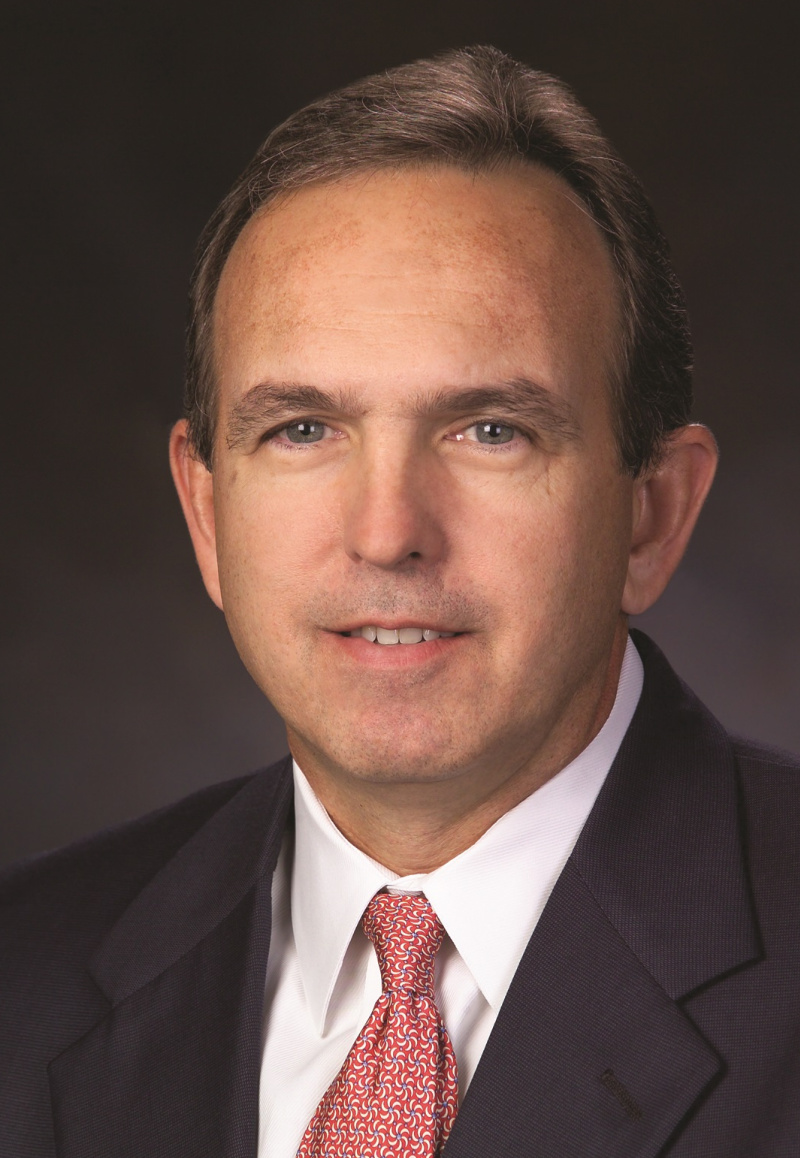
shallower depth
in the southern
Midland than
north, so wells
are less expensive
to drill, said
Scott Josey,
chairman and CEO
of Sequitur Energy
Resources LLC.
For example, “if we can get 20% more stages completed in a month, that’s more margin revenue for our service partners. They, in return, share [that] with us in the form of lower costs.”
They are “our extended team, and that team gets better the more we practice together—like any team. There’s no question it works to our benefit and theirs.”
Although a Permian Basin operator since founded by Autry Stephens in 1979 with a first Spraberry well, Endeavor only began developing its leasehold with horizontals four years ago.
Many longtime privately held basin E&Ps were confronted in the past decade with a point at which they had to decide whether they were going to become unconventional-resource shops or retire. Many, such as the Bass family, sold.
Endeavor didn’t; it became a tight-rock shop. Among personnel, it brought in Robertson in 2017 from Marathon Oil Corp., where he had been vice president of U.S. unconventional resources; prior, he was vice president of engineering and exploitation at Pioneer Natural Resources Co.
Third-quarter production was 133,000 boe/d, up 86% from third-quarter 2018. “While we were good on the vertical side,” Robertson said, “we’ve had to learn from our peers across the basin and through our own efforts to be effective at our horizontal development.”
That vertical legacy helped with having its position approximately 95% HBP. And the leasehold is practically free. “All of those assets were acquired on a low-cost basis over the years, and they’ve already been fully depreciated,” Robertson said.
So returns are measured on new-well development and operating cost “and not also on the [land] purchase, if you will.”
Like Henry Resources, where Endeavor drills next isn’t motivated by a need to HBP. “This lets us focus and build infrastructure in concentrated, high-quality areas,” he said. The tasks at hand aren’t all over the map, “which allows our team to be more efficient.”
More targets, maybe
Endeavor is landing in Wolfcamp A, Wolfcamp B and the overlying Spraberry. In western Martin County, it is appraising Jo Mill, which is a sub-member of the lower Spraberry Sands, as well as the middle Spraberry, “so up to five benches of development,” Robertson said.
At a higher oil price, it likes pockets of others as well, such as appraising Wolfcamp D, which is also known as Cline.
“We’re testing those benches for full development. We would like to add them on a consistent basis,” Robertson said. “I don’t think we’re quite there yet, but we’re very encouraged by the early results.”
In some areas of the basin, it also sees potential from the Wolfcamp C, “and there are even some shallower horizons that have traditionally been overlooked [that have] a substantial amount of oil,” he said.
Longer term, Endeavor might look at Clearfork overlying the Spraberry. “At a different oil price, it could be very attractive,” he said.
Strawn, a conventional formation that has been developed vertically, might take a horizontal tap, he added, in some structural traps.
All of this leaves much more to possibly move into the “future inventory” column one day. “I would love to fully understand all of those other horizons today, but we’ve got such a tremendous inventory of high-value, low-risk wells in the Wolfcamp A and B and the lower Spraberry—and, increasingly, Jo Mill, middle Spraberry and Wolfcamp D.
“It’s just going to take us a while to get through all of it. We’re really blessed in a lot of ways.”
Tulsa, Okla.-based Laredo Petroleum Inc. CEO Jason Pigott told Investor it is looking at Cline again; a year ago, its thinking was that it wasn’t economic. Privately held, Fort Worth, Texas-based DoublePoint Energy LLC was expecting at press time to add a fifth rig and, in addition to the Wolfcamp, Spraberry and Jo Mill, it is interested in the Cline, the company told Investor.
Henry Resources is landing in the Wolfcamp and Spraberry, about 50:50, Bledsoe said. “In many areas, it depends on what rights you own and, obviously, what benches are technically better. But we drill equally in the Spraberry and Wolfcamp.”
In some of its leasehold, “there are Spraberry benches that are kind of skinny at $55 oil that people like us would put at the end of their drilling inventory,” Bledsoe said. In addition, “there have been known to be some Clearfork benches in some areas, but those won’t work until there’s, probably, $100 oil or better.”
Outside of that, “we haven’t seen a lot that interests us above the Spraberry,” he said.
The same ROR
In the southern Midland Basin, Sequitur is focused primarily on the Wolfcamp. It has looked at data on other benches, such as the lower Spraberry, which it believes prospective across much of its leasehold.
“But we’re generally not in much of a risk-taking mode right now,” Josey said, “so we’ll watch and evaluate the performance by other operators in those formations.”
The basin gets gassier while moving southeast into Sequitur’s Irion County leasehold. Meanwhile, the Wolfcamp is at a deeper depth in Reagan and Upton counties and is very oily.
Third-quarter production was some 35,000 boe/d, about 70% liquids, more than half of that oil, from more than 280 horizontals, 100% operated, with working interest averaging 89%.
From the top of the lower Spraberry to the bottom of the Wolfcamp is about 3,500 feet in the southern Midland. That thickness is an attribute that also drew Denver-based Tracker Resource Development III LLC’s attention. Tracker had been a part of Henry Resources’ successful vertical Wolfberry play in Sweetie Peck Field in northern Upton in 2004. It moved into the Bakken from there, selling that portfolio to Hess Corp. in 2010.
Returning to the Midland Basin, Tracker III has 26,000 acres in Irion; it estimates its Wolfcamp to contain more than 200 million barrels per day (MMbbl) of oil per 2 square miles. As of late 2019, it had 28 horizontals in the formation.
Sequitur’s Josey said that, in addition to thickness, Wolfcamp is at a shallower depth in the south than in the north. Its wells in Irion start out oily, but GOR increases fairly quickly. The net effect is that they’re cheaper to drill because of the shallower depth and cheaper to operate because they’re gassy.
“As we move into our assets in Reagan and Upton counties, they are deeper and oilier. You need an extra string of pipe, and it costs more to operate,” Josey said.
Thus, in terms of rates of return, the wells in Irion vs. Reagan are not materially different.
“The southern Midland Basin gets somewhat of an undeserved, poor reputation, and that is mainly because several companies have had financial struggles, probably more to do with heavy debt loads than with the rock,” Josey said.
The rock is good in much of the southern Midland; Sequitur is looking to add more. “We like the area. We believe that the full-cycle economics are very good where we are.”
Among neighbors’ wells in the area recently, Sable Permian completed 17 in Reagan and three in Irion with IP-24s averaging 1,661 boe/d, 87% liquids, according to an early-December summary by J.P. Morgan’s Jarayam and Glick.
Meanwhile, Pioneer reported 15 wells in Midland and Reagan counties that had IP-24s averaging 1,552 boe/d, 84% liquids, Jarayam and Glick added. And Parsley Energy Inc. reported two Reagan wells that had IP-24s averaging 1,779 boe/d, 84% liquids.

Getting on the grid
Formed in 2011, Sequitur entered the southern Midland in 2016 with an acquisition from EOG Resources Inc. In 2019, it picked up 11,085 net acres in Reagan and Upton from Callon Petroleum Corp., along with some minority interests, for $265 million.
Of its 90,000 net acres, about two-thirds are on University Lands; most of the balance, on large ranches. “We have significant infrastructure in place, much of which we inherited when we did the [EOG] transaction.”
That includes gas-gathering, water-gathering, source-water wells, disposal wells, water recycling, ponds and connections to multiple processing plants.
Sequitur added an oil-gathering and centralized gas-lift system in Reagan this year, eliminating oil trucking and numerous individual wellhead compressors. And it’s gotten rid of nearly all rod pumps.
In addition, it renegotiated its processing agreements and electricity contract.
Endeavor’s Robertson said getting electricity in the field can be a challenge in West Texas. Rather than takeaway, “if there is a constraint today, I think power distribution is at the top of the list.”
There isn’t a shortage on the big Texas grid, but regional distribution hasn’t kept up with field demand.
“In some areas, we’ve taken on the need to generate our own power and be our own distributor until power distributors can keep up,” Robertson said. “It isn’t an impediment, but it causes us to have to take on additional work.”
In Borden County, Surge Energy’s Webb said it’s reducing its generator use. “We’ve worked to get on grid.” How? “We kind of jumped the queue in 2018 and committed to build our own substation.”
By December, it was completed. “We’re not just waiting [for the power company]. We were very proactive a year ago,” Webb said.
Surge expected the power problem when entering the county. “To give you a relative scale,” Webb said, “there are only a few hundred people in that county. We knew we would be using more electricity than was the norm, so we worked out a solution.”
SIDEBAR:
Lower Barnett To Wolfcamp
Houston-based Zarvona Energy LLC is evaluating potential for Wolfcamp development in producing leasehold it recently added in the southern Midland Basin. Meanwhile, its primary focus in the Permian has been in Andrews County, targeting the lower Barnett.
The overall portfolio includes operations in West Texas, East Texas, Oklahoma and western Louisiana. Of more than $200 million in capital projects since 2016, more than half of the spend has been on the lower Barnett program, making more than 20 horizontals to date.
“We will continue to be active in our Andrews area [in 2020], although at a slower pace than the past two years,” said Matt Jurgens, Zarvona COO. The position, which is on University Lands in southern Andrews, is about 90% developed, “so we will be wrapping that project up [this] year.”
Meanwhile, it is evaluating the lower Barnett in a new property in Ector County. This past fall, it was drilling a second well there.
“Our main focus will be understanding that play more, as it is about 20 miles south of our Andrews activity,” Jurgens said. “We are in the early stages of appraisal on that property.”
While the lower Barnett laterals have been 2 miles or less, Zarvona’s looking to try some of more than 2.5 miles up to 3 miles. It hasn’t made these yet “mostly because our acreage position in many cases doesn’t have three sections lined up in the right direction,” Jurgens said. “In a majority of cases, we have two sections lined up.”
Zarvona is also interested in other benches, such as the economic potential for Woodford. Marathon Oil Corp. reported this past fall that it has 60,000 net acres prospective for Woodford and Meramec. The project area is in the Delaware Basin and straddles southern Winkler and northern Ward counties, southwest of Zarvona’s development in the lower Barnett.
But, Jurgens said, the Marathon findings are interesting. One Woodford test had an IP-30 of 365 barrels of oil equivalent per day (boe/d) per 1,000 lateral feet, 78% oil; a second test, 240 boe/d per 1,000 feet, 48% oil.
Jurgens said, “We have long felt the Woodford could be prospective in the right areas. We also feel the Atoka could be a good target in certain areas as well.”
Meanwhile, the environment for margin of return this past year has been “pretty tough for operators and service companies alike.” Rigs were released as oil hovered in the $50s and natgas and NGL prices plummeted.
“North Dakota is a good example,” he said. “Operators there reported receiving $20/bbl [per barrel] for their NGL and $1 an Mcf [thousand cubic feet] in 2018. In the third quarter of 2019, they received almost zero for natural gas and $3/bbl for their NGL.”
‘Point-0s’
With five rigs drilling for it in early December, Surge started out in 2015 with about 6,500 boe/d; at the end of third-quarter 2019, it was producing 56,712 boe/d, 83% oil, all from Wolfcamp A, B and Spraberry. Net leasehold is about 86,000 acres with high working interest.
“One of our core values has always been to be innovative,” Welch said. In addition to building a substation, it began using regional sand in late 2017 and built produced-water-treatment facilities, so it’s using 100% recycled in fracs, leaving roughly 50 MMbbl of freshwater in the aquifer.
It has eliminated controllable flaring and implemented a leak detection and repair program.
Subsurface, its punch list includes effective fracture-stimulation near wellbore; for that, it’s finding success with mechanical diverters.
“We’re actively testing and working with multiple vendors on the diversion front,” Webb said. “You start really revolutionizing how you think about completions again.”
Is this a 6.0 update? “Well, there are so many point-0s. I don’t use that; I just ask, ‘What are we actually doing?’”
The work is helping with the risk and cost profile of the extra-extended laterals, he believes. “If you can lower your risk—the mechanical number of times you have to go into your well—you give yourself a better chance of having a mechanically successful well during the completion and drill-out phase.”
He expects it could also help with child wells. “Better production from the child well is one of the theses. It’s not to say it’s proven, but we’re not discouraged.”
Regardless, the cost savings alone help. “It’s not that you’re going to get this huge change in production, but you’re really getting a good cost-savings on the completion side.”
Parent-child
Endeavor has encountered a few primary-infill well issues; otherwise, it’s mostly only drilled parent wells. The most it’s put in a DSU to date are 16. “And we put all of those in at one time, so those are all, in our view, primary wells,” Robertson said.
“There were no infill wells, so we haven’t seen any issues with that.”
A unit at Endeavor is usually a half-mile wide by 2 miles long, totaling 640 acres. The most that can be put in a DSU might not be a concern, Robertson said.
“If you have the right stimulation design and the right spacing, you could have 20 or 30 wells in a unit and all of them perform very well.”
The Endeavor tack is to place the highest-value, lowest-risk wells in its DSUs “the first time we show up,” Robertson said. “What that does is long-term minimize the number of infill wells and any potential issues around that.”
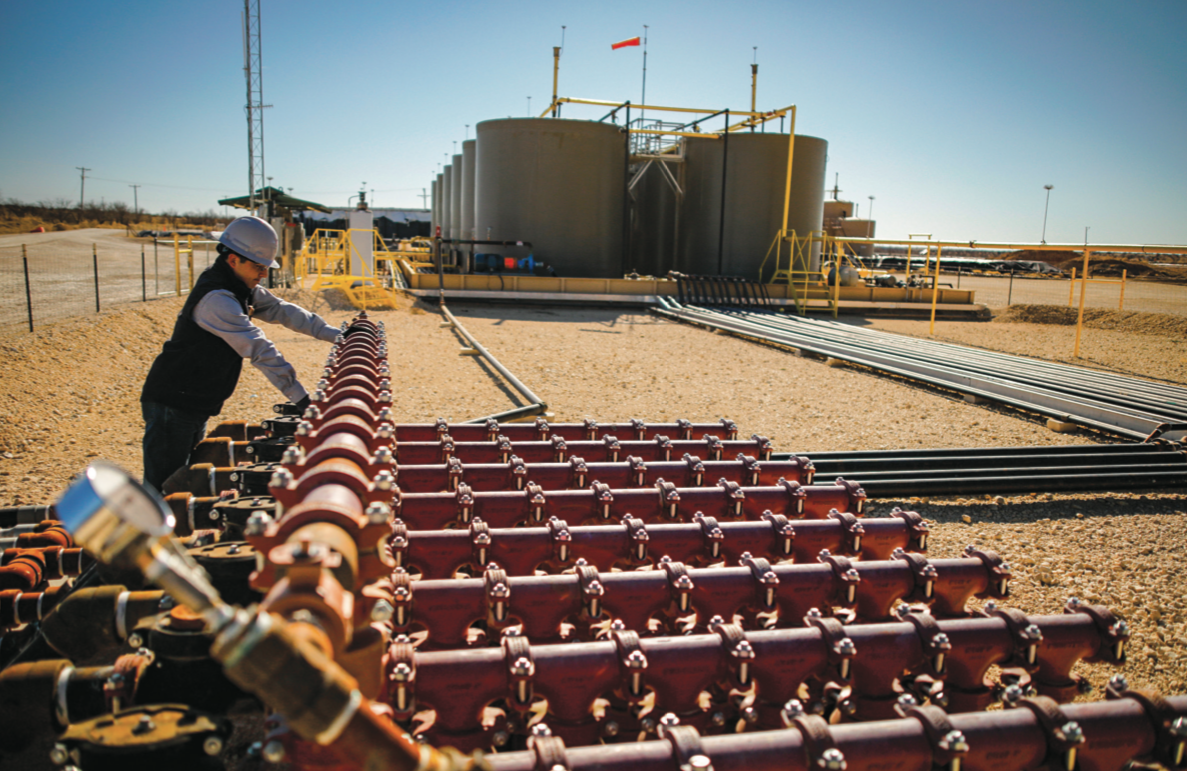
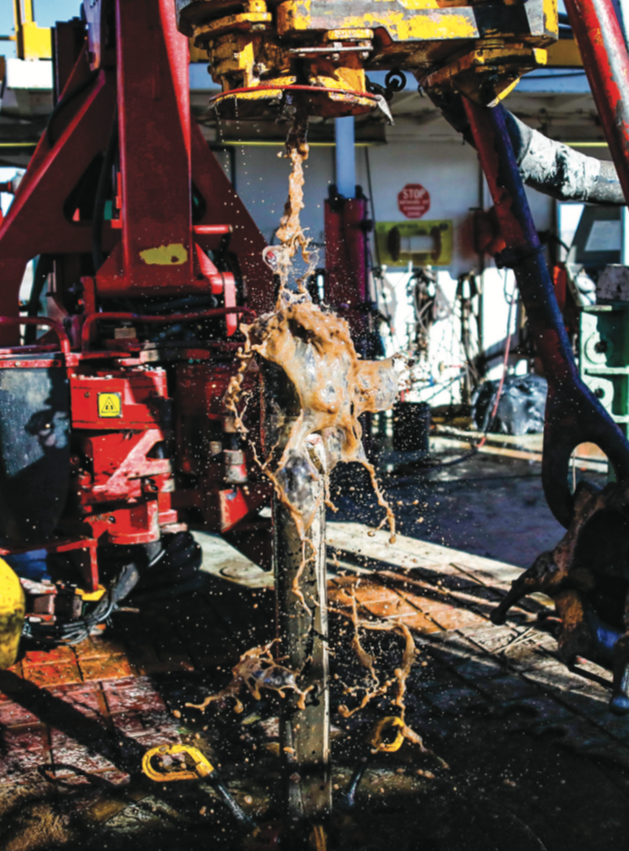
By the time it returns with infill drilling in some prospects, industry may have solved the issue, he added. “Completion efficacy has risen tremendously. I have full confidence the industry will figure out how to mitigate primary-infill well impacts much as we solve other issues in the industry over time.”
Endeavor commenced horizontal development with best practices in hand from other operators’ years of trial and error. “We’re on our fifth generation of stimulation design,” Robertson said. “And we’re currently testing parts and pieces of what we hope will be our sixth generation.”
It has more than 9,000 gross horizontal locations identified. “We’ve drilled about 5% of our total inventory of horizontals that we understand today—not including all the [potential] ones we talked about earlier,” Robertson said.
“We’ve just barely scratched the surface of our resource base. We’re optimistic about what our future looks like.”
Taking partners
Henry Resources’ Bledsoe said most of the work on the best completion recipe has been done, “but there are always going to be a few things [to adjust], especially area-specific, because one size doesn’t fit all.”
Overall, completion has reached 70% or 80% of its fullest potential, he estimates. “There’s still room left to get better.”
A family operation, Henry isn’t private-equity backed, although about 10% of its portfolio is in a partnership with a private-equity group. In that, Post Oak Capital LP made a $200 million commitment in 2017 to Moriah Henry Partners LLC to acquire and drill in the Midland Basin.
In the rest of its portfolio, Henry Resources does take working-interest partners in everything it does. “We can never really afford 100% of everything we generate; it’s just too much capital commitment,” Bledsoe said.
Secondly, “Mr. Henry has always been a big proponent of taking partners in everything you do because they make you better.”
Taking partners diversifies the portfolio, and they “make you better technically because you’re meeting with them and brainstorming with them.”
The result also means Henry Resources has a piece of a lot of others’ wells and a lot of others have a piece of Henry’s wells—mostly other small independents. “We do a lot of data-sharing,” Bledsoe said. “We do a lot of data-trading, especially with offset operators where we need to know their frac schedules and they need to know ours.
“We’re all testing the same benches, so we’re cooperating with and learning from each other. There is a lot of synergy out there from co-ownership and offset operations.”
As for trading acreage to accommodate longer laterals, that remains difficult, although operators keep trying. “Everybody values their own acreage a little bit differently,” Bledsoe said. “But everyone realizes, for the most part, that’s what needs to happen.”
‘Oil fraction’
Is it nice to be a private—rather than a public—E&P right now? Bledsoe said, “I think [private] is a much better environment to be working in, where Wall Street’s not telling you what to do.”
Robertson said a private operator has the same goal as a public: delivering the best possible cash return to the owner. “In our case, we have one owner.” But, he added, in the public space, “investors want something different than what they wanted in the past.”
Sequitur’s Josey, who took Mariner Energy Inc. public in 2006, said, “There are pros and cons to both being private vs. being public.”
If public, even in a challenging market, “at least you have access to capital,” Josey said. “However, the market may push you to do some things that you might not do otherwise.”
The focus on “oil fraction” is an example; it’s being used as a proxy for rate of return. “Should a producer’s percentage of oil in the production stream decline even a percent in a quarter, the stock may get punished,” Josey said.
Meanwhile, it may have only declined between completing new DSUs. “There are also a number of oily companies struggling financially,” he said.
Sequitur’s oil fraction declined from some 40% to 35% this past year as it stopped drilling in April and focused on integrating the package from Callon. It used excess cash flow to pay down its bank debt, which had increased to just under $600 million at the Callon closing.
It expects resuming an active drilling program will increase its oil fraction to around 50%.
“A public company might not have the ability to pause drilling as we were able to do as a private company because of the focus on oil fraction and quarterly growth,” Josey said.
Sequitur was also concerned in 2019 about the potential for lower oil prices and lower netbacks on natural gas.
“With the uncertainty in commodity prices, takeaway capacity and geopolitical events,” Josey said, “we made the decision in late 2018 to just address our contractual obligations in 2019, sit back and let the market get more clarity, which is another benefit of being a private company.”
When seeking an answer on whether to drill or not drill, Sequitur primarily consults rate of return. “Rate of return incorporates everything—whether it’s oil fraction, operating costs, capex, royalty rate [or] commodity prices.
“If you just focus on oil fraction, you might not get it right.”
Able to try
Surge Energy is a subsidiary of a public company based in China, but its board is focused on building a long-term, sustainable oil and gas company, Webb said, rather than building to exit. It expects to be cash-flow neutral by the end of [2020] and positive after that.
“We’ve taken a very conservative leverage profile and financial philosophy, keeping a strong balance sheet,” Welch said. Its debt-EBITDA ratio is under 2.0, for example. “Not everyone in the basin is doing that.”
The parent company has allowed Surge to have an innovative culture. From the start, Welch said, “we weren’t going to necessarily just do it the way everyone else has done it.”
It’s helped Surge attract personnel who want to be a part of being able to “take a few chances here and there,” he said. “When they’re successful, you have significant results. That’s proven in our long laterals and our completions.”
Meanwhile, he added, “if you make one mistake in the public arena, you have to make a press release and talk about that.”

Recommended Reading
Thanks to New Technologies Group, CNX Records 16th Consecutive Quarter of FCF
2024-01-26 - Despite exiting Adams Fork Project, CNX Resources expects 2024 to yield even greater cash flow.
Cheniere Energy Declares Quarterly Cash Dividend, Distribution
2024-01-26 - Cheniere’s quarterly cash dividend is payable on Feb. 23 to shareholders of record by Feb. 6.
Marathon Petroleum Sets 2024 Capex at $1.25 Billion
2024-01-30 - Marathon Petroleum Corp. eyes standalone capex at $1.25 billion in 2024, down 10% compared to $1.4 billion in 2023 as it focuses on cost reduction and margin enhancement projects.
Humble Midstream II, Quantum Capital Form Partnership for Infrastructure Projects
2024-01-30 - Humble Midstream II Partners and Quantum Capital Group’s partnership will promote a focus on energy transition infrastructure.
Hess Corp. Boosts Bakken Output, Drilling Ahead of Chevron Merger
2024-01-31 - Hess Corp. increased its drilling activity and output from the Bakken play of North Dakota during the fourth quarter, the E&P reported in its latest earnings.






